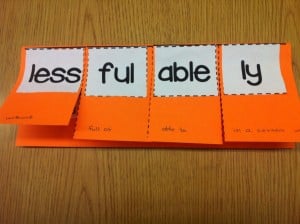Affixes: Front, Back, Inside or Out
You might have noticed when you read something or hear something, all the small additions to words that totally change their meaning, I’m talking about things like “unexpected outcomes are very unfavorable.” These are known as affixes, they are morphemes, or the smallest grammatical unit of a language, and serve a purpose in almost all languages, so let’s explore.
There are several types of affixes, English predominantly uses prefixes and suffixes, those are morphemes that go before the word and after it, just as I displayed above. Some of the more common are:
“Anti-” Against, opposite (Antivirus)
“Co-” Joint, accompanying (Cooperation)
“De-” Reverse action (Deemphasize)
“Un-” Not, against (Unequal)
“-ed” Past tense (Closed)
“-ing” Progressive, continuous (Racing)
There are many, many others of this type, but now is not the time to go into too much detail regarding them all; instead, let’s look at the less familiar, and those of different languages.
An infix is an affix that rests inside the word, English does not have any true infixes, they exist more in languages such as Arabic, some Spanish countries, Latin, Greek, and the Austroasiatic languages such as Indonesian, which I’ll use as the example: “Kerja” means work while “kinerja” means performance; “Gembung” means bloated, and “gelembung” translates to bubble.
A circumfix is a morpheme surrounded by two others on either side, for example the English enlighten. This is common in German in regard to the past participle, in which there is often a morpheme encased between ge- and -t, such as “spielen” meaning play, and “gespielt” which is played.
A duplifix is a word that doubles itself, English has them in uses such as “hokey-pokey,” “super-duper,” “walkie-talkie,” and “boogie-woogie.” In different languages this can have a different meaning, such as in Malay, in which “rumah” means house, and “rumah-rumah” means houses; or Finnish, where it is used to indicate originality and completeness, such as “ruoka” meaning food, and “ruokaruoka” meaning proper food, or the opposite of snacks.
A Simulfix is an affix that modifies phonemes that already exist in the word, in English this can be represented by “mouse” and “mice,” or “foot” and “feet.”
A Transfix is an affix that has several parts spread among a word, examples exist in Maltese in “ktb” meaning write, and “kiteb” meaning he wrote.
A suprafix is the changing of the stress on a section of a word, “On an orchard I produce a large amount of produce.”
An interfix links two stems together, most commonly in English this is an -o- such as in speedometer; this differs from an infix as it attached to two different morphemes, rather than placed inside a one.
 Lastly we have the disfix, which is the removal of a segment from the root word, a rather uncommon affix, but present in French and especially the Muskogean languages, such as “balaaka” — lies down, and “balka” — lie down.
Lastly we have the disfix, which is the removal of a segment from the root word, a rather uncommon affix, but present in French and especially the Muskogean languages, such as “balaaka” — lies down, and “balka” — lie down.
What other languages do you know that use affixes in a different way than English? Are you aware of the existence of any others?
